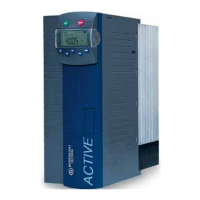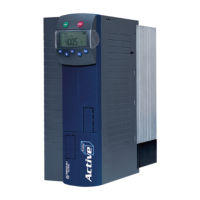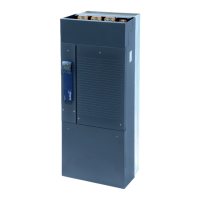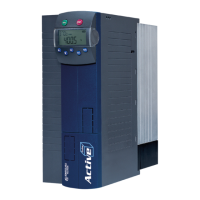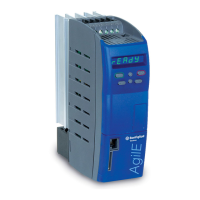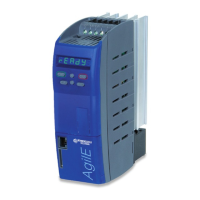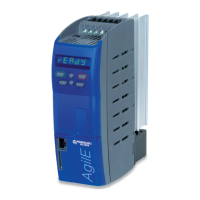Operating Instructions ACTIVE06/07 19
06/07 Operating Instructions ACTIVE 19
3.4 ACT 201 (4.0 up to 9.2 kW, 230 V)
Type
ACT 201
-18 -19 -21 -22
Output motor side
Recommended shaft output
P kW 4.0 5.5 7.5
4)
9.2
Output current
I A 18.0 22.0 32.0 35.0
Long-term overload current (60 s)
I A 26.3 30.3 44.5 51.5
Short-term overload current (1 s)
I A 33.0 33.0 64.0 64.0
Output voltage
U V Maximum up to mains voltage, three-phase
Protection
- - Short circuit / earth fault proof
Rotary field frequency
f Hz 0 ... 1000, depending on switching frequency
Switching frequency
f kHz 2, 4, 8, 12, 16
Output brake resistor
min. brake resistor
R Ω 24
24 12 12
Recommended brake resistor
(U
dBC
= 385 V)
R Ω 30 24 16 12
Input, mains side
Mains current
3)
, 3ph/PE
1ph/N/PE; 2ph/PE
I A
18
28
2) 7)
20
1)
-
4)
28.2
1)
-
4)
35.6
1)
-
4)
Mains voltage
U V 184 ... 264
Mains frequency
f Hz 45 ... 66
Fuse 3ph/PE
1ph/N/PE; 2ph/PE
I A
25
35
25
-
4)
35
-
4)
50
-
4)
UL Type 250 VAC RK5, 3ph/PE
1ph/N/PE; 2ph/PE
I A
20
25
30
40
Mechanics
Dimensions
HxWxD
mm 250x100x200 250x125x200
Weight (approx.)
m kg 3.0 3.7
Degree of protection
- - IP20 (EN60529)
Terminals
A mm
2
0.2 … 6 0.2 … 16
Form of assembly
- - vertical
Ambient conditions
Energy dissipation
(2 kHz switching frequency)
P W 200 225 310 420
Coolant temperature
T
n
°C 0 ... 40 (3K3 DIN IEC 721-3-3)
Storage temperature
T
L
°C -25 ... 55
Transport temperature
T
T
°C -25 ... 70
Rel. air humidity
- % 15 ... 85; not condensing
If required by the customer, the switching frequency may be increased if the output current is reduced at the
same time. Comply with the applicable standards and regulations for this operating point.
Output current
6)
Switching frequency
Frequency inverter nominal power
2 kHz 4 kHz 8 kHz 12 kHz 16 kHz
4.0 kW 18.0 A
2)
18.0 A
2)
18.0 A
2)
15.1 A
2)
12.2 A
5.5 kW
4)
23.0 A
1)
22.7 A
1). 5)
22.0 A
1), 5)
18.5 A
5)
15.0 A
5)
7.5 kW
4)
32.0 A
1)
32.0 A
1)
32.0 A
1)
26.9 A
1)
21.8 A
9.2 kW
4)
40.0 A
1)
38.3 A
1), 5)
35.0 A
1), 5)
29.4 A
1), 5)
23.8 A
5)
1)
Three-phase connection requires a commutating choke.
2)
One- and two-phase connection requires a commutating choke.
3)
Mains current with relative mains impedance ≥ 1% (see chapter„Electrical installation“)
4)
Only three-phase connection
5)
Switching frequency is reduced in thermal limit range.
6)
Maximum current in continuous operation
7)
The device for one-phase connection is not included in the product catalogue. It is available on demand.
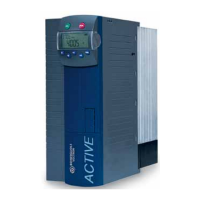
